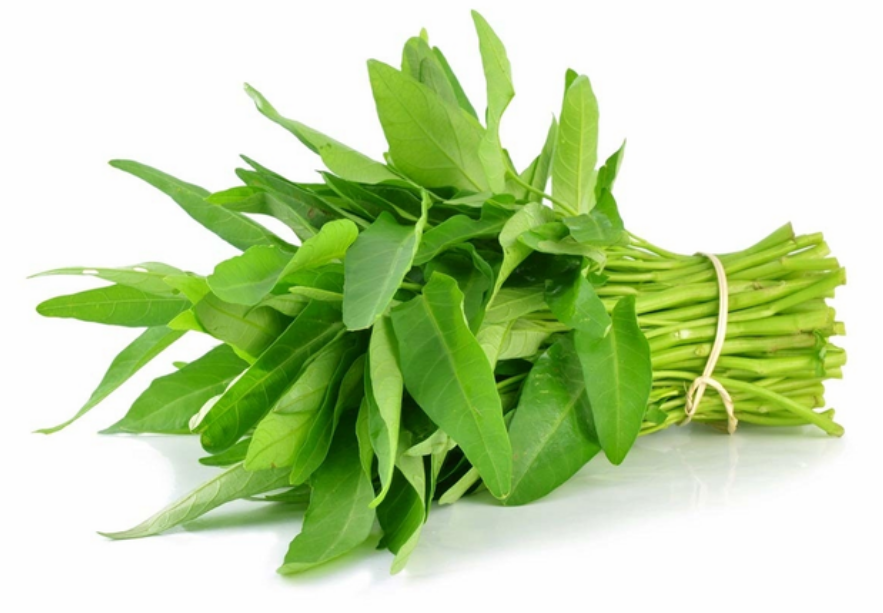How to Spot Pesticide-Contaminated Water Spinach
Water spinach is a popular vegetable in Vietnam, often found on dining tables across the country. Unfortunately, some unscrupulous individuals, in pursuit of profit, douse the vegetable with pesticides and chemicals. Pesticide-treated water spinach exhibits abnormally thick stems and large, lengthy leaves that appear overly fresh from root to tip. Notably, the leaves of pesticide-contaminated water spinach exhibit a dark greenish hue due to the absorption of heavy metals, and washing them produces excessive foam.
Water spinach treated with growth stimulants tends to bruise easily and exhibits reduced sap levels when broken. If left from morning till evening, it wilts or turns yellow and becomes unfit for consumption.

A clever way to identify pesticide-contaminated water spinach is to observe the color of the cooking water. If the cooking water turns light green when hot and then changes to dark green with black sediment as it cools, the vegetable is likely unsafe for consumption. Moreover, water spinach contaminated with lead tends to have a bitter taste.
If you’re still unsure about the presence of chemicals, try this simple trick: squeeze a few drops of lemon juice into a bowl of cooked water spinach. The presence of pesticide or growth stimulant residues in the vegetable will prevent the characteristic color change in the presence of lemon juice.
Is Dark-Colored Water Spinach Broth Due to Pesticide Residues?
The darker hue of water spinach broth often worries homemakers, prompting concerns about potential pesticide residues. Addressing this issue with Vietnamnet, Professor Nguyen Duy Thinh, former lecturer at the Institute of Food Technology, Hanoi University of Science and Technology, explained that water spinach is a common vegetable in Vietnam, offering valuable nutritional benefits and fiber. The color of water spinach broth can vary, ranging from yellow-green to brown and dark green, influenced by calcium and magnesium residues, resulting in alkaline broth, or by the water used for cooking. Pesticide residues, on the other hand, would impart a strong, chemical odor rather than affecting the color of the broth.
If your cooked water spinach exhibits a darker color, there is no need for concern. Simply let the broth cool and add some lemon juice before consuming. The lemon juice will help clarify the broth.
For tastier results, add a pinch of salt to the cooking water. Bring the water to a full boil, then add the water spinach, stirring continuously, and cook over high heat without covering the pot to retain the green color and ensure even cooking.
It is important to note that water spinach grown in polluted areas may contain heavy metals, including lead. Water spinach contaminated with lead exhibits a dark greenish color, thick stems, and a bitter taste. Therefore, it is advisable to purchase water spinach from reliable sources. Avoid water spinach with overly lush tips and excessive sprouting.

Who Should Avoid Eating Water Spinach
– Individuals with Weak Digestive Systems: According to Tien Phong, the parasite Fasciolopsis buski, commonly found in water spinach, can easily enter the body if the vegetable is consumed raw or undercooked. Individuals with weak digestive systems may experience symptoms such as indigestion, abdominal pain, and allergies due to this parasite.
– People with Open Wounds: Experts advise against consuming water spinach for individuals with open wounds, as it can stimulate cells and cause raised scars, affecting the appearance of the skin. Additionally, water spinach can increase itchiness in newly formed skin. Therefore, it is recommended to refrain from eating water spinach until wounds have completely healed.
Individuals Taking Medication: If you are undergoing medical treatment or taking traditional Chinese medicine for health purposes, it is best to avoid water spinach. The nutrients in this vegetable may interfere with the effectiveness of the medication, prolonging the healing process.
People with Arthritis: The nutrients in water spinach can exacerbate joint pain, causing further discomfort and fatigue.
Tips for Preparing Water Spinach to Reap its Health Benefits
Avoid Eating Water Spinach Out of Season: Water spinach is typically in season during the summer months. However, due to profit motives, it is now cultivated year-round, often with the use of growth stimulants and pesticides. To safeguard your health, experts recommend consuming seasonal produce. If you wish to eat water spinach out of season, expect to pay three to five times the regular price for pesticide-free, sustainably grown water spinach.
Don’t Eat Water Spinach with Dairy Products: For optimal health, refrain from consuming dairy products and water spinach together. Dairy products are rich in calcium, while water spinach contains chemicals that can hinder calcium absorption. Combining these two foods may reduce the body’s ability to absorb nutrients from both sources effectively.
Thoroughly Cook Water Spinach: It is important to know that water spinach often harbors mud, parasites, and even pesticide residues. Inadequate washing and cooking can introduce these harmful substances into your body. When cooking water spinach, ensure that the water reaches a rolling boil before adding the vegetable. Incomplete cooking may fail to kill parasites, leading to digestive issues such as abdominal pain and indigestion.
– Wash Vegetables with Diluted Salt Water: Soaking vegetables in diluted salt water for 15-20 minutes is believed to eliminate bacteria and chemical residues effectively.
– Rinse Vegetables with Rice Washing Water: Rice washing water has a mildly acidic pH, similar to that of pesticides. Over time, the rice water breaks down and loses its acidity, helping neutralize harmful substances in vegetables. Additionally, the viscous nature of rice washing water enables it to absorb pesticide residues from the surface of vegetables effectively. Being free from additional chemicals, rice washing water is a safer option for cleaning fruits and vegetables. This method is particularly effective for cleaning small, seeded fruits like strawberries, mulberries, and grapes.































